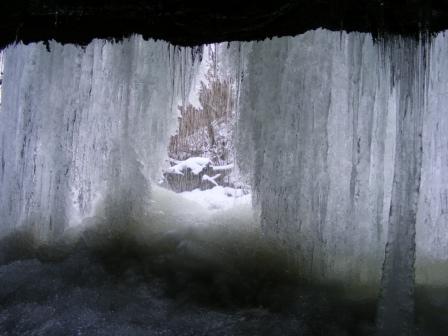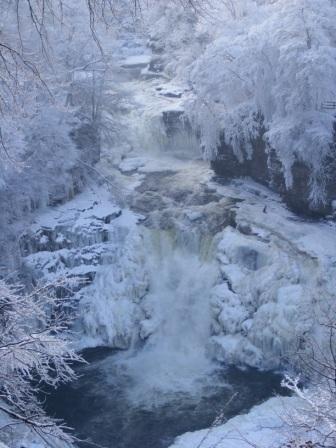I’ve been a Natural Talent apprentice since 30th March 2009. At these times, it’s traditional to say that the time has flown, and it has. But actually when I think about everything that has happened during this apprenticeship it’s even more surprising that it’s only been a year. It doesn’t seem at all like yesterday that I walked into the office of the Clyde River Foundation to begin work; it feels strangely distant, and I think that’s testament to the changes I’ve found in myself since starting here. For example I can no longer walk past a river without considering what processes are going on underwater, and what bugs are creeping around in there; nor can I walk over a bridge without looking at what might be crawling up it, or stand next to a tree without checking it for minibeasts. I can’t go away anywhere without making sure I have forceps, tubes and a hand lens at the very least. I’m still the same person, but now that person is an entomologist.
Some very exciting things have been happening lately. First and foremost, I have been successful in bidding for funding from the Freshwater Biological Association to undertake a project this summer. Working with the Clyde River Foundation, and Craig MacAdam at Buglife, I’ll be studying the effects of climate change on the distribution and behaviour of Ameletus inopinatus, the upland summer mayfly (The title, penned by Willie Yeomans who heads the CRF, “Is the upland summer mayfly in hot water?”). Restricted to high altitudes by water temperature, it is hypothesised that this species will be pushed further up into headwater streams as the climate gets warmer. This would have the effect of isolating populations, and ultimately threaten the survival of the species in the UK. We would expect climate change to affect Ameletus initially at lower altitudes and latitudes, so we are going to check up on some old records in these areas. We’ll also be looking at changes in the flight period of the species, and measure the altitudinal distribution of the species in areas with recent records. Not only is this going to be a interesting piece of scientific research, shedding a bit more light on the future of headwater ecosystems, but it also means I’m kept in a job until October rather than July, when my apprenticeship ends. So for the next 6 months or so I’m going to be trekking up hills across the UK in search of interesting insects.
Recently I spent a week away at the Natural History Museum in London, where I worked to put together their synoptic collections of caddisflies and stoneflies. This involved going through their pinned collections and pulling out a male and a female of each species. These will be housed in the new British synoptic collection that is currently being put together. Eventually the idea is to have examples of every species found in the UK (animal, plant, fungus … even fossils) which can be used as a reference collection by naturalists who need to compare specimens. Needless to say, this is an incredibly ambitious project and one that I’m proud to have played a part in. The experience wasn’t limited to that, as I got to see a lot of the museum too (the size of the library is unbelievable) and meet some fantastic biologists working on very interesting projects. Also I had a bit of time to just browse through the stacks of insects locked away in miles and miles of cabinets behind the scenes. And most importantly, I got to feel really smug wandering around the public galleries with a card that could get me into places other people couldn’t go.
Further excursions down south are planned in April and May, when I will be working with the Environment Agency in their freshwater monitoring duties. Hopefully this will be a chance to see a different selection of riverflies, and a higher diversity, than can be found up here.
Exciting times ahead. Here’s to many more years happily playing with bugs!
– Louis (the riverfly apprentice)
Oh, and here’s some photos of rivers in the Clyde catchment taken this winter, just because they’re pretty.

